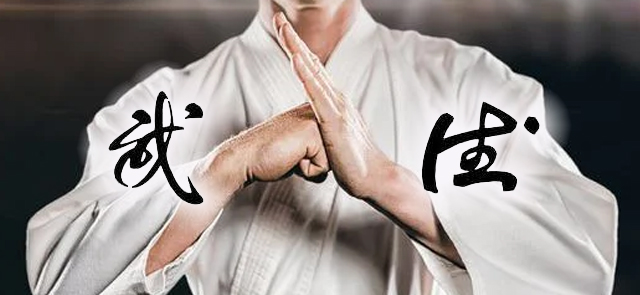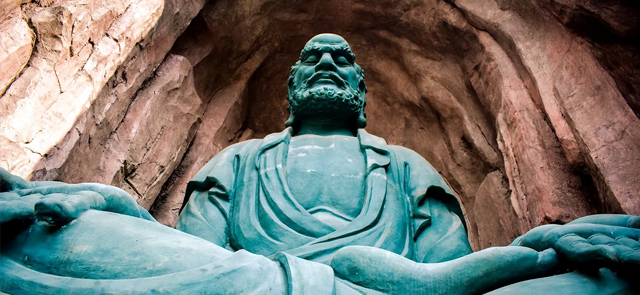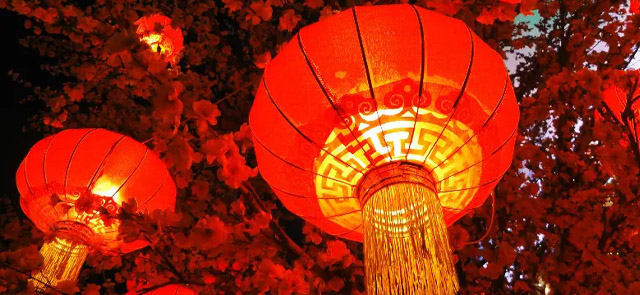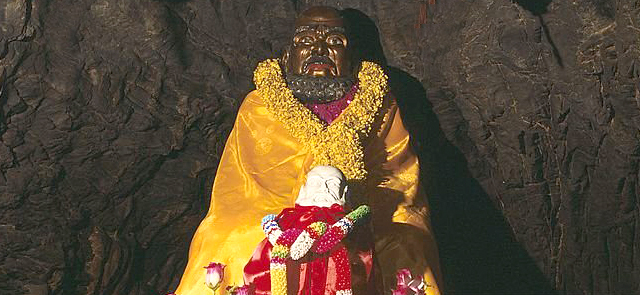In Chan, there are two specific teachings that even if taken literally , they are well defined and very expressive . One teaches that " The Thorough Examination of the Super - Ego is simply to identify the Buddha Nature " and the other teaches that " The Understanding of Buddha Nature via Sudden Enlightenment is certainly possible. "
In reality, however , the clarity and expressiveness of these teachings , cannot be successfully expressed in any language , and these teachings often turn out to be incomprehensible and unreal.
A famous example is the main teaching of Chan , which is hardly understood by anyone and says :
The Teaching of Chan is " no obsession on words " [Chin.: bù lì wénzì 不立文字] and rejects any form of writing as a means of transmitting its Principles , which indicates that the Chan practitioner seeks enlightenment through direct experience.
«The path to virtue lies in the heart , not the mouth.»
Master Shi Yan Zhuo
The Masters of the past , made clear that there is no written language in the entire world that can carry and promote the whole Meaning of Truth that is revealed by the Teaching . Therefore , the Teaching suggests that the written language or a piece of writing can not be used as a means of understanding the essense of the truth revealed by it.
«Chan seeks enlightenment . For this reason no-one should talk about Chan. You just have to experience it.»
Master Shi Yong Po
The Path of Chan Cultivation emphasizes on traditional patriarchal custom of orthodox teaching transmission from a great master to the next, from heart to heart.
Bodhi Dharma [ Chin .: Pútí dámó 菩提達磨], the Patriarch of Shaolin , began to preach the teachings of Chan in China , "targeting the human heart so that one can see his own nature and reach enlightenment. Without being limited to words , but to teaching beyond the status quo. "
It came to us through the second Patriarch DaZu HuiKe [ Chin.: dàzǔ Huìkě 大祖 慧可 | 487~ 593 ] , the third Patriarch Seng Chan [Chin.: sēngcàn 僧璨 | 526 ~ 606 ] , the 4th Patriarch Da Yi Dao Xin [Chin.: dào xìn chánshī 道信禅师 580~651 ] , the 5th Patriarch Da Man Hong Ren [ Chin.: hóngrěn chánshī 弘忍禅师, 601~674 ] , the 6th Patriarch Hui Neng [Chin.:huìnéng dàshī 慧能大师 | 638~713] and the other masters of future generations. Patriarchs shaped Continuous Lineage, while the Teaching itself goes from heart to heart.
«You need to transmit the teaching in silence , as it was transmitted in this way from previous generations , like I 'm transmitting it to you , without explanation , without philosophy , but from silence to silence. This is the teaching transmittion method of our ancestors.»
Master – Sokei-An Sigketsou Sasaki | 1882 - 1945 CC ] interpretation of the Platform Sutra [Chin.: Liù z? tán j?ng ????], from 6th Patriarch Hui Neng .
The principle of «sudden enlightenment» that was taught widely from Hui Neng is the only correct approach to gain access to the Truth of Teaching. In the Platform Sutra [Chin.: Liùzǔ Tánjīng 六祖壇經] , Patriarch Hui Neng proposes a central idea , which can serve as a guide for those who are committed to the study of Chan , "no thinking as a basic principle , without form as its essense and no obsession as its fundamental principle " The highest state of Chan is just «no thinking and no obsession».
«Chan is «inherent transcendence» that is experienced through the practice of life. Chan 's study is more than just meditating in the Meditation Hall.»
Venerable Shi Yong Xin







